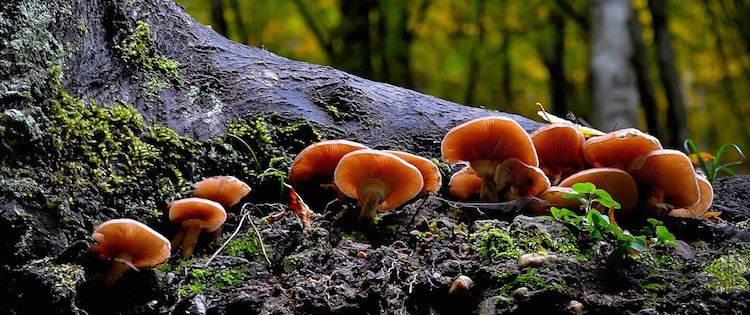Protoctists
were first eukaryotes in evolve. Protists are among the most complex living
cells. While most are unicellular, there are some multicelular. They
can live on their own, however the majority grows in colonies, depending on
each other to survive.
Protists are similar to monera in that they are unicellular. Protists are a bit more complex because they contain a nucleus. They also have moving parts and can move around within their environment.
 |
| Unicelular lifeforms |
Many
protoctists appear to be both plant and animal. Like plants, they are green,
and can create their own food. However, like animals, they have moving body
parts and are able to move around their environments. You can see why
scientists no longer classify living things into two kingdoms.
 |
Protoctist create their own food.
|
Protists built their homes in water,
such as oceans, ponds, lakes and streams. Some adhere to rocks and reside at
the bottom, while others float on the surface of the water, taking advantage of
photosynthesis. They also live in aquariums and feeders for birds. Aquatic
environments are ideal for protists, since they have cilia and flagella that
allow them to move through the water. Being single-celled organisms find it
difficult to move ashore, although some make their homes in moist terrestrial
areas, mud and under fallen leaves.
|
|
What
do they need to eat?
The
prototist may be powered through three formas.en the first one the prototista
eat their food like animals, the second of them the prototista absorb nutrients
that exist in your environment and act as decomposers of the material organic
and in the third, the prototista carry out photosynthesis as the target.
They
can be according to their autotrophic or heterotrophic diet:
· Autotroph,
only a species of flagellated protozoan Eugenians that own chloroplasts and
chlorophyll obtain food through their own photosynthesis.
· Heterotroph,
most of the members, obtain the energy from foods manufactured by other living
organisms that they feed on, eg Ameba, Paramecio, Sténtor, Vorticelas, etc.
Structure
There are no tissues
except in red and brown algae. They have cell walls of varied composition, and
the unicellular autotrophs are covered by a teak. The unicellular predators do
not have coatings. The unicellular forms are endowed with movement by creep,
but above all by cilia or flagella.
Classification
The Protist Kingdom are classified into two groups which are protozoa and algae.
Algae
they are unicellular or multicellular organisms, are mainly water but can also live in moist media. They are simiral to plants but they aren't plants. They can reproduce sexual or asexual.
Algae can be divided in to groups:
- Red algae: unicellular or multicellular, they live depth
- Green algae: unicellular or multicellular, they live in sweet water.
- Brown algae: multicellular, they live in salad water.
Protozoa
they are often said to be similar to animals
They are unicellular organisms, with heterotrophic nutrition and their reproduction is mainly asexual by bipartition or sporulation. Some are free-living and others are parasites. The protozoa are classified according to the type of locomotion in: Flagellates, ciliates, rhizopods and sporozoans (they have no movement).
Reproductive
function.
They are asexual by cloning, or sexual by gametes.
|

















Comentarios
Publicar un comentario